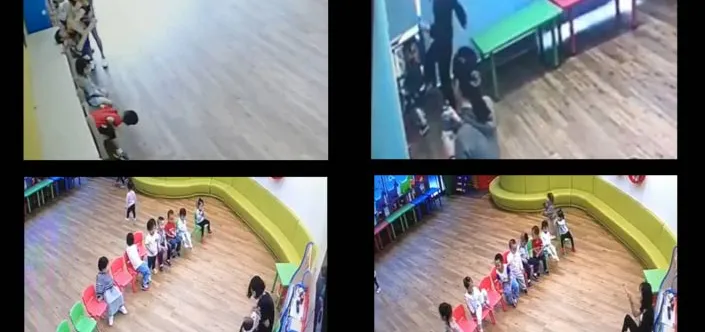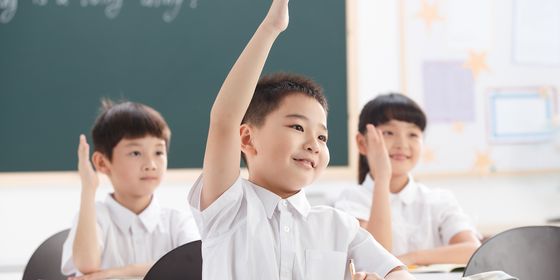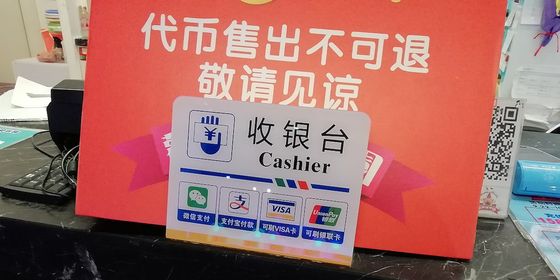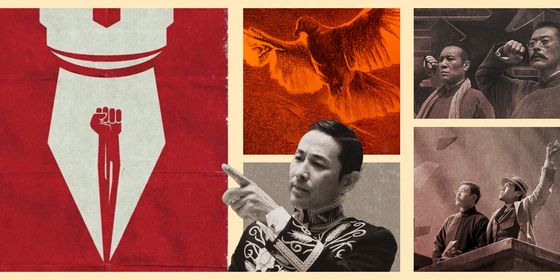“Some of the teachers are still kids themselves.”
Reports of child abuse by China’s kindergarten teachers and staff, starting with the much-publicized case at the Ctrip’s company daycare center in Shanghai at the start of the month, have continued with allegations of mistreatment brought against kindergartens in Beijing, Baoding, Nanjing, Wuhan, and Guangxi Autonomous Region in this week alone.
One Beijing news blog has reported that as of November 15, 19 lawsuits regarding staff acting violently toward children have been launched against kindergartens since the start of the year. In 2012, a similar spate of kindergartener abuse took place in Lanzhou, Gansu province; Taiyuan, Shanxi province, and Wenling, Zhejiang province.regular
Op-eds in People’s Daily, ever concerned with stability, have cautioned against a public lynching of the kindergarten teaching profession in light of the recent scandals—better suggestions include improving staff pay, or the managerial oversight and communication within childcare organizations. However, there are deeper problems relating to the growing pains of the private kindergarten industry.
In China, ages 6 to 7 marks the start of compulsory education. Pre-school or “early-age education” (幼教), typically referring to children ages 3 to 6, have only recently become widespread: Nationwide, according to the Chinese Ministry of Education, 75 percent children of children ages 3 to 6 in the nation were enrolled in pre-school education as of 2015, compared with the 62 percent predicted based on past numbers at the start of the decade. It’s expected to reach 85 percent by 2020. The actual number of children enrolled in 2015 was 4.3 million, whereas the number had hovered steadily at around 2.5 million in the decade between 1999 and 2009.
In the era of the planned economy, state-owned work units typically provided childcare for their workers, while children who didn’t attend could be raised by family. State unit-run kindergartens persisted in the 1980s and 90s, with some accepting outside students when they had extra space. However, the post-reform economy, saw many work units closed, downsized, or cutting back on worker amenities, and private companies began to fill the large gap left by the closure of state kindergartens and demand for early-age education by the rising middle class.
Public kindergartens in China today have a reputation for being notoriously difficult to get into—acceptance is usually by lottery—but inexpensive, with tuition not exceeding 900 RMB per month by government standards in Beijing. According to a 2016 industry report by ResearchInChina, just 15,000 new public kindergartens opened nationwide between 2003 and 2015, while the number of private kindergartens increased from 55,000 to 143,000 in the same period, not counting unlicensed childcare operations that have also proliferated in Chinese cities. China’s recent ban on for-profit private schools (effective September this year) applies only to compulsory education, and kindergartens in first-tier cities charge up to 5,000 or 6,000 RMB per month—yet regulations have not kept pace with the rising price tag.
One former kindergarten teacher from Jiangxi province, surnamed Ma (pseudonym), diagnoses the underlying problem behind the recent abuse cases as the lack of regulation in teacher qualifications. “In our city, [private] kindergarten teachers in don’t go through a formal examination board by the city, unlike primary school teachers; they are recruited by the kindergartens directly,” she tells TWOC. “Technically, the kindergarten is supposed to look at whether teaching candidates have a certificate [in early-age education], but many smaller ones don’t.”
In the case of Ctrip, where childcare staff was recorded shoving children, force-feeding them wasabi, and spraying them with disinfectant, it was found that the third-party agency that operated the daycare had no prior experience providing childcare services. Their top two hiring requirements, a representative told media, were “a health certificate” and “a love of children.” One of the two teachers reported for abusing children at a Beijing kindergarten in April also had not obtained a degree or certificate in early-age education (though was reported to be “studying” for one).
In the aftermath of the 2012 abuse scandals, the Oriental Morning Post reported that according to the local education bureau in Wenling, only 1,300 of the city’s 2,800 early-age education teachers had certification—with many preschools adopting an approach of “hire first, then study for a certificate.” An investigation the same year by the Shandong Provincial Education Department, covering 194 kindergartens in 17 cities, found that 53 percent of teachers had no certificate in teaching, and 83 percent had no certificate in early-age education.
Ma, however, feels that a degree is only part of a teacher’s qualification. “It’s especially hard to find a new hire that has both a certificate and experience. The average age of kindergarten teachers these days is not high, since more experienced teachers will demand better pay, so many kindergartens prefer to hire new graduates, or even high school and middle school graduates.”
“Generally speaking, you learn by watching the more experienced teachers,” Ma says. She admits she entered the profession because other career choices at the time didn’t sound attractive, and received her training at a private professional college with a six-month internship program. “At school they just teach you a few things like play an instrument, dance, and draw, not how to communicate with kids, no child psychology…you can only learn from experience.”
Older and experienced teachers can be scarce, however, because of the workload and low pay. Ma jokes that she didn’t gain a single ounce in her 14 years in the profession—and eventually quit when she got a chance to take over an electronics shop (the kindergarten where she worked also closed less than two years later). She blames these factors for the high turnover and lowering age of private kindergarten teachers; the Ministry of Education estimated in 2016 that nationwide, average monthly kindergarten teacher salaries were 10 to 30 percent lower than the average salary of their respective provinces, though public kindergartens are typically reported offering insurance and benefits.
The department also reported that the average teacher-student ratio nationwide was 1:22, far off their goal of 1:5 to 1:7. There is no official data regarding age, but the Beijing Evening News quoted an expert saying it was 41 in the 90s—whereas according to People.cn, in 2015, an unspecified “regional education department” was only hiring teachers aged 25 and under.
Chinese criminal law also lacks a sentencing guidelines relating to the abuse of children—Article 260, commonly known as “mistreatment crime” (虐待罪), refers to only mistreatment by one’s family members and does not cover child abuse in a school setting. The recent events have led education experts to make renewed effort to propose criminalizing child abuse.
Ma welcomes these suggestions, believing clearer laws can protect the reputation of more responsible teachers. “There are too many negative reports about kindergartens these days, I can only say every profession has bad apples—and they rarely report on the vast majority of very hardworking teachers,” she says. “I learned a lot from other teachers when I started, and it’s not hard really. Just don’t be afraid of getting dirty, hug the kids, talk to them—kids that age are very simple, be good to them and they’ll be happy.”
“Some of the teachers though, are still kids themselves. They see so many kids at once, all crying, and they don’t know what to do. Some teachers start crying too.”
Cover image from Caixin













